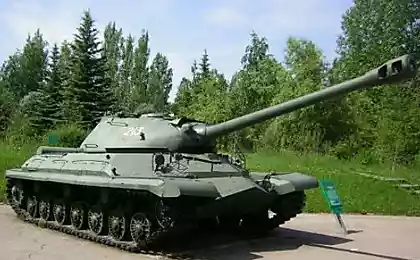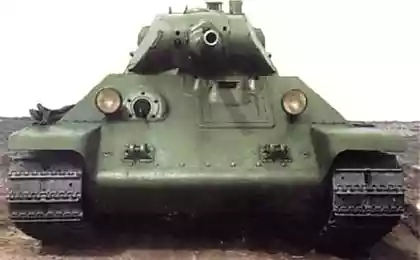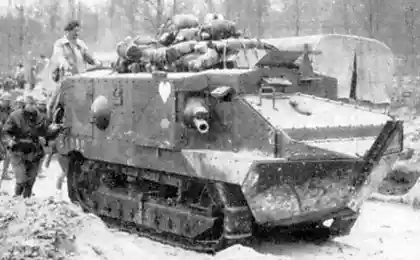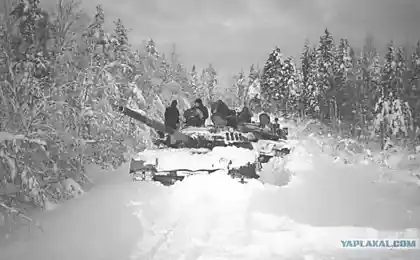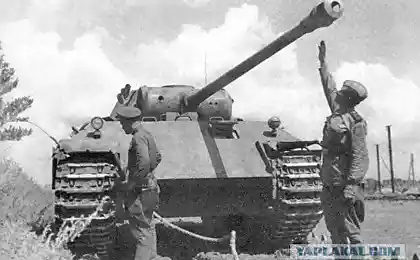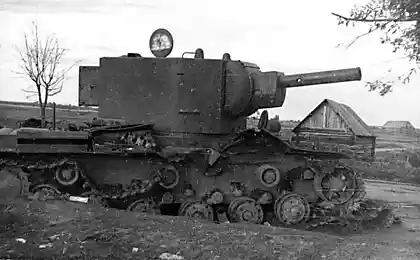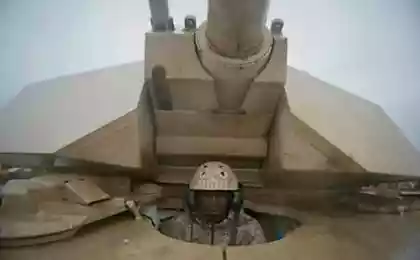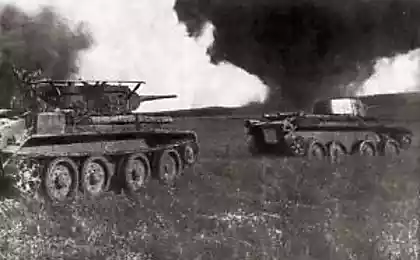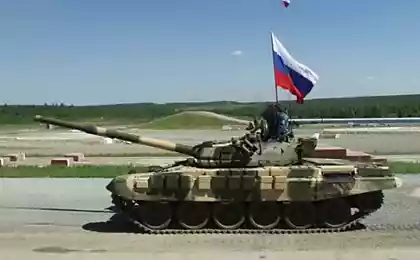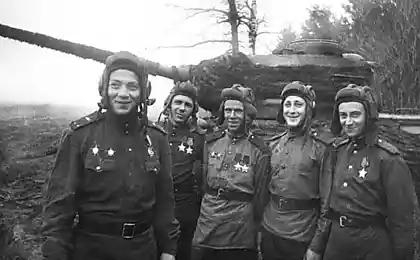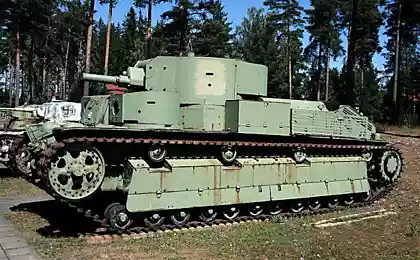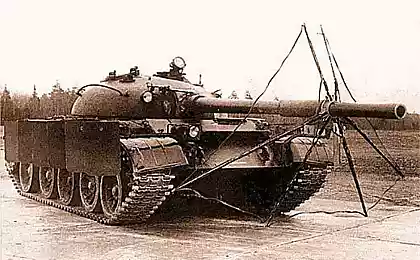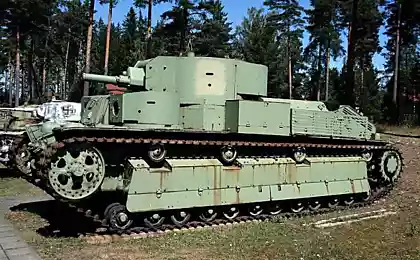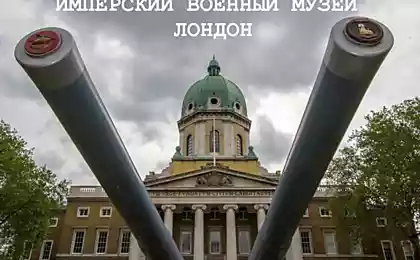943
The Story of a tank (4 pics + video)
Tank is descended from the British. He was called strongly rushes into the thick of the military battles, rushing under the shells and bullets, destroying enemy trenches, sowing death and destruction. Only one of his appearance on the battlefield demoralize the enemy.
British soldiers called him "the tub." He was born under the roar of hammers riveters in the throes of an economic crisis in the city of Birmingham in England. The exact date of his birth is unknown, but the first representatives of its kind left the factory gates in 1917. Like all British tanks of the time, tanks Mark-V (Mk-V) is available in two versions "male» (male) - with mixed gun-machine-gun armament, or "female» (female) - from a purely machine-gun armament. The tank, which will be discussed, had a gun and machine gun armament and was "male". In just one year of manufacture these tanks managed to become a symbol of the First World War.
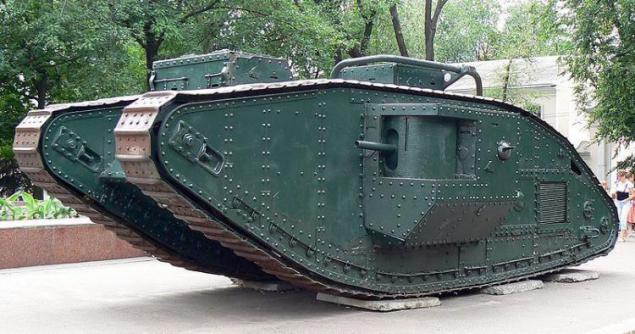
was in this tank the serious drawback that the bullets he advocated, and from the shells - no. As one of the officers-tank, "armor shell missed, like butter knife flashed and the tank filled with gasoline and oil tanks, ammunition and shells».
It is not known whether our hero managed to tread the German trenches and fight with the Teutonic monsters A7V, however, World War I ended, and we hit the beast tearing apart the Russian Empire, the service of Anton Denikin. Change of the owner, his animal nature has remained unchanged. Mk-V all also remained a formidable weapon, causing death in a bloody civil war.
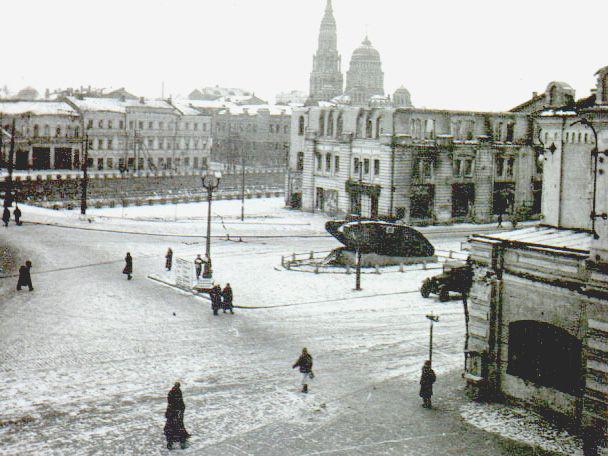
But did not stay our animal Denikin, apparently not to the liking he had served in the volunteer army, and already in 1920 on the Kakhovka bridgehead, he was captured after three days of fighting the Red Army:
"Heroic troops under the command of general Blucher not only repulsed the attack of the enemy, but by going to the friendly counterattack, finally defeated and captured its entire line of its location. 10 tanks, 5 armored vehicles, machine guns and more than 70 other trophies have become our prey. »
-M. Frunze
Getting up at the red banners of the Red Army, he began to serve along with 4 other such tanks in the 4th Armoured Brigade of the Red Army (until 1923) and then in the 10th squad Selyavkina. By decree of Voroshilov in 1938, our hero was sent on a holiday in Kharkov exhibit, in company with another same.
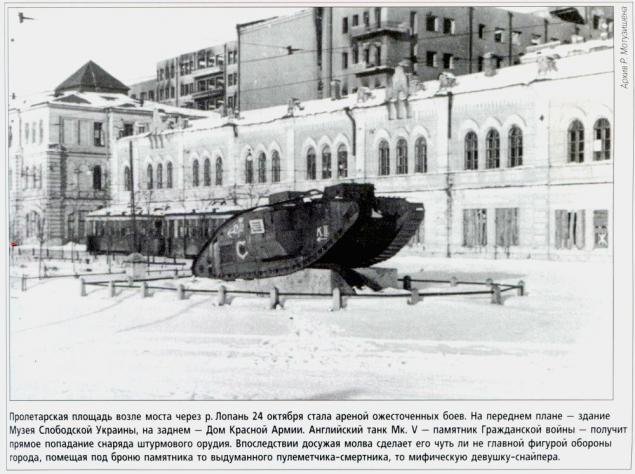
He will be able to survive the Second World War, two German occupation, he was not sent to the smelter, as some of his other colleagues. He will stand in silence, all temporarily abandoned and forgotten, waiting in the wings. The former military glory passed away, and he does not inspire the superstitious horror of the Germans, as in the distant 1917 during the First World War. Our tank was more fortunate than his brother, who was in Kharkov Proletarian area, which, though stood through the war, was badly damaged by shelling and went for scrap.
But the war is over, our tank podremontirovali and made honorable attraction Kharkov historical museum, placing it first in the territory of present-day court Kharkov diocese. Later, the remaining historical museum, it moved to its new location, where we can see it and today.
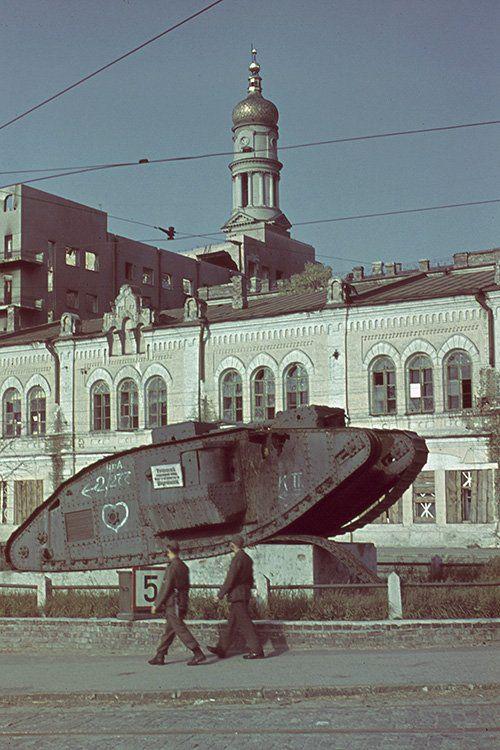
Source
British soldiers called him "the tub." He was born under the roar of hammers riveters in the throes of an economic crisis in the city of Birmingham in England. The exact date of his birth is unknown, but the first representatives of its kind left the factory gates in 1917. Like all British tanks of the time, tanks Mark-V (Mk-V) is available in two versions "male» (male) - with mixed gun-machine-gun armament, or "female» (female) - from a purely machine-gun armament. The tank, which will be discussed, had a gun and machine gun armament and was "male". In just one year of manufacture these tanks managed to become a symbol of the First World War.

was in this tank the serious drawback that the bullets he advocated, and from the shells - no. As one of the officers-tank, "armor shell missed, like butter knife flashed and the tank filled with gasoline and oil tanks, ammunition and shells».
It is not known whether our hero managed to tread the German trenches and fight with the Teutonic monsters A7V, however, World War I ended, and we hit the beast tearing apart the Russian Empire, the service of Anton Denikin. Change of the owner, his animal nature has remained unchanged. Mk-V all also remained a formidable weapon, causing death in a bloody civil war.

But did not stay our animal Denikin, apparently not to the liking he had served in the volunteer army, and already in 1920 on the Kakhovka bridgehead, he was captured after three days of fighting the Red Army:
"Heroic troops under the command of general Blucher not only repulsed the attack of the enemy, but by going to the friendly counterattack, finally defeated and captured its entire line of its location. 10 tanks, 5 armored vehicles, machine guns and more than 70 other trophies have become our prey. »
-M. Frunze
Getting up at the red banners of the Red Army, he began to serve along with 4 other such tanks in the 4th Armoured Brigade of the Red Army (until 1923) and then in the 10th squad Selyavkina. By decree of Voroshilov in 1938, our hero was sent on a holiday in Kharkov exhibit, in company with another same.

He will be able to survive the Second World War, two German occupation, he was not sent to the smelter, as some of his other colleagues. He will stand in silence, all temporarily abandoned and forgotten, waiting in the wings. The former military glory passed away, and he does not inspire the superstitious horror of the Germans, as in the distant 1917 during the First World War. Our tank was more fortunate than his brother, who was in Kharkov Proletarian area, which, though stood through the war, was badly damaged by shelling and went for scrap.
But the war is over, our tank podremontirovali and made honorable attraction Kharkov historical museum, placing it first in the territory of present-day court Kharkov diocese. Later, the remaining historical museum, it moved to its new location, where we can see it and today.

Source
